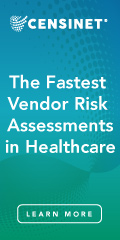Readers Write: How CMS Can Build a National Directory of Healthcare Providers
How CMS Can Build a National Directory of Healthcare Providers
By Justin Sims
Justin Sims is president and chief operating officer of CareMesh of Reston, VA.

Four weeks ago, CMS issued a Request For Information (RFI) to collect feedback on whether it should build a national directory of healthcare providers and services. They highlighted the problems the lack of quality provider information causes for consumers and the industry and asked for feedback on solving those problems.
But doesn’t CMS already have a provider directory?
NPPES is the closest thing that CMS has to a directory. It is used to issue ID numbers to healthcare professionals (NPIs) and covers almost all physicians (about a million) and many other healthcare workers (about five million). However, it suffers from infrequent update (the average age of an entry is 6.7 years old) and has gaps in the information it collects (it lists only 200k validated secure email addresses when there are well over a million).
There is also the Medicare Provider Enrollment, Chain, and Ownership System (PECOS). This is routinely updated by physicians every five years, so it is a little more current, but because it focuses on Medicare enrollment, it doesn’t cover all physicians and doesn’t collect the same information as NPPES.
Why hasn’t the problem already been fixed? In the words of Tom Hanks in “A League of Their Own,” if it wasn’t hard, everyone would do it.
There are several reasons that a single national provider directory has eluded us.
First, there’s scale. Maintaining information on a million of anything is hard.
Second, there’s the structure. Physicians often work for multiple organizations and keep a fluid list of physical locations with different contact information at each one.
Third, there’s content. Do you, for example, know your EIN? And how many physicians do you think know their Direct Address? (Not a lot!) Or their EHR end-points? (Even fewer.) Or can readily list the insurance carriers they accept at each organization and location? Not to mention that providers and their staff are busy.
If CMS is going to take this challenge on, and we hope that they do, we see four broad options:
Provider-Supplied Data
There are already regulations to encourage providers to submit information updates to NPPES and PECOS within 30 days. These rules have some teeth. For example, providers can be suspended from the Medicaid program if they don’t comply. As part of their strategy, CMS could certainly make it easier for providers and their staff to make updates and could increase penalties for those who don’t. But asking a million physicians and a further five million healthcare professionals to update their information manually will be a tough strategy to deliver success.
System-Supplied Data
In most cases, basic profile information about providers is maintained in the EHR. Another strategy that CMS might consider is to modify its Certification of Electronic Health Record Technology (CEHRT) standards and establish a process for EHRs to send directory information electronically using HL7 FHIR standards. While this would only cover EHR users, it would account for almost every prescriber in the country, and done right, it could reduce physician burden and result in continuously updated information, at least for some.
Combine Multiple Data Sources
While the EHR concept sounds promising, it would take some years to implement and a few more to iron out the wrinkles. Another approach that CMS might follow is to combine data from many sources. In addition to CMS data sources, there are many others, including state Medicaid agencies, medical licensing boards, Medicare Advantage plans, Medicaid MCOs, Qualified Health Plans, DirectTrust, and health system and provider group websites (many of which follow the schema.org standard), to name but a few.
By combining all of these sources and using statistical techniques to validate the data, CMS could create a more accurate picture of the provider than any single source alone. Minimally, it could use these techniques to identify where data quality issues may exist and then follow up with the provider.
Help Industry Solve the Problem
Finally, CMS could do more to help the industry solve the problem. Several companies, ours included, are already doing a combination of the above. But it would be much easier if CMS standardized its data (in NPPES and PECOS) and modified regulations to ensure that health plans, in particular, shared their information in a standardized electronic format.
For a problem as old as the US healthcare industry — states gained the right to regulate health and license doctors in the Bill of Rights in 1791 — we doubt that CMS will solve this overnight. But it is a challenge that most segments of the healthcare industry are cheering for, and one for which the ultimate solution will lie in a combination of the options described above.





















































































It is interesting that a number of my providers as well as the hospital system ask if I have advance…